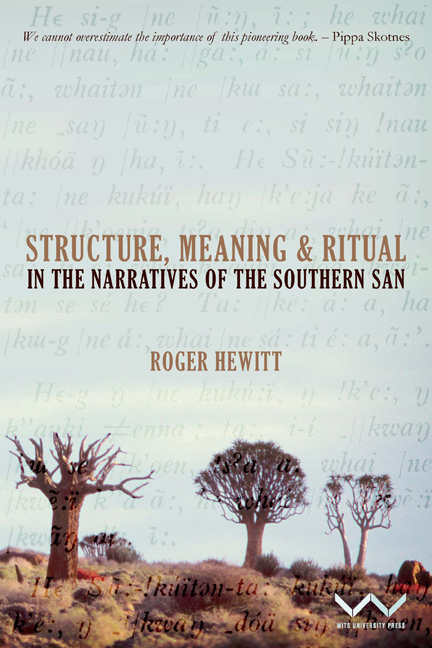Book contents
- Frontmatter
- Dedication
- Contents
- Acknowledgements
- Introduction
- 1 Ethnographic background
- 2 Introduction to the narratives: their context, performance and scope
- 3 Legends and the stories of !Khwa
- 4 Sidereal narratives: the story of the Dawn's Heart and his wife the Lynx
- 5 Animal narratives
- 6 |Kaggen in belief and ritual
- 7 The |Kaggen narratives (1): characters and content
- 8 The |Kaggen narratives (2): sequence and structure
- 9 |Kaggen in belief, ritual and narrative: a synthesis
- 10 Two |Kaggen narratives: compositional variations
- 11 The verbal surface: a note on the narrators
- Appendix A Girls’ puberty observances of the ǀXam
- Appendix B The shamans of the ǀXam
- Bibliography
- Index
2 - Introduction to the narratives: their context, performance and scope
Published online by Cambridge University Press: 21 April 2018
- Frontmatter
- Dedication
- Contents
- Acknowledgements
- Introduction
- 1 Ethnographic background
- 2 Introduction to the narratives: their context, performance and scope
- 3 Legends and the stories of !Khwa
- 4 Sidereal narratives: the story of the Dawn's Heart and his wife the Lynx
- 5 Animal narratives
- 6 |Kaggen in belief and ritual
- 7 The |Kaggen narratives (1): characters and content
- 8 The |Kaggen narratives (2): sequence and structure
- 9 |Kaggen in belief, ritual and narrative: a synthesis
- 10 Two |Kaggen narratives: compositional variations
- 11 The verbal surface: a note on the narrators
- Appendix A Girls’ puberty observances of the ǀXam
- Appendix B The shamans of the ǀXam
- Bibliography
- Index
Summary
Like many other San groups, the ǀXam had a highly verbal culture. Indeed, speech was almost a continual social activity. In Dorothea Bleek's words:
Men hunted for a few hours or a few days then had nothing to do as long as the game lasted. A woman's daily task of gathering roots and wood and fetching water was soon finished except in times of scarcity. Half or more than half of each day was spent lounging about watching bird and beast, and talking – always talking. Every event of a hunt was told and re-told. Every phase of a meeting with other people, the action of each person and animal being described and acted, the voice and gesture admirably imitated (Bleek & Stow, op. cit., xxiiif).
It is easy to see how such a culture should be rich in narrative, how narrative would be part of daily living to an extent unknown in literate societies where leisure time is limited.
It is difficult for us to realise how large a part talking, and hence storytelling, makes in primitive man's life. Where a man's only labour is hunting which occupies only a few hours of a day, and probably not every day, there is an amount of leisure unparalleled among civilised people … There are many hours at midday under a bush and in the evening round a fire, when all sit and talk and listen. Stories mingled with songs accompanied by mimicry are the chief daily recreations (D.F. Bleek 1929a: 311).
Such is the verbal context of the one hundred or so narratives collected by Bleek and Lloyd and indeed they show the impress of that context very clearly – particularly in their heavy use of dialogue, exploring narrative events now from one character's perspective, now from another. Even in the difficult conditions under which they were recorded, these narratives are alive with speech.
The ǀXam employed only one term for narrative, kum, (plural kukummi). There is no record of their making distinctions between kinds of narrative such as myth, legend or fable. All narratives were kukummi whether they related the activities of supernatural beings, humans or animals. The word also appears in the titles of narratives, for example: ǁkhã:ka kum – ‘the lion's story’, or !gã ka kum – ‘the frog's story’.
- Type
- Chapter
- Information
- Publisher: Wits University PressPrint publication year: 2008



